Blog
Best Asian Pear Tree Varieties for Your Garden
Are you dreaming of picking crisp, juicy fruit right from your own backyard, but feeling overwhelmed by all the Asian pear tree options out there? Maybe you’ve tried growing fruit trees before and ended up disappointed, or you’re just not sure which variety will actually thrive in your garden. If you want a tree that’s not only delicious but also easy to care for and perfect for your space, you’re in the right place.
Let’s walk through everything you need to know about Asian pear tree varieties—so you can plant with confidence and look forward to baskets of sweet, crunchy pears.
Asian pear trees, often called apple pears, nashi pears, or Korean pears, bring a unique flair to American gardens. Unlike the soft, buttery European pears, Asian pears are round, crisp, and refreshingly juicy—almost like biting into an apple. These trees are gaining popularity in the US because they’re both beautiful and practical.
Their spring blossoms add a burst of color to your yard, and their fruit is a real treat for anyone who loves a sweet, crunchy snack. Plus, they’re surprisingly easy to grow, making them a fantastic choice for gardeners of all skill levels.
What Makes Asian Pear Trees Unique?
What really sets Asian pear trees apart is their irresistible texture and flavor. Each bite is a delightful combination of crunch and juiciness, with flavors ranging from honey-sweet to slightly tangy. These trees are not just about the fruit—they’re also a lovely addition to your landscape, with glossy green leaves and showy spring flowers. Many varieties have a long shelf life, so you can enjoy your harvest for months. Whether you’re looking to impress guests with homegrown fruit or simply want a low-fuss tree that delivers, Asian pears are a standout choice.
If you’re still on the fence, consider these benefits of adding an Asian pear tree to your garden:
-
Delicious and versatile fruit: Enjoy them straight from the tree, sliced into salads, or baked into desserts.
-
Low maintenance: Many varieties are naturally resistant to common diseases like fire blight, saving you time and worry.
-
Cold-hardy options: Some types can handle chilly winters, so you don’t have to live in a warm climate to grow them.
-
Ornamental beauty: Their blossoms and foliage add visual interest to your yard.
-
Great for small spaces: Dwarf and semi-dwarf trees fit perfectly in compact gardens or even large containers.
Growing Asian pears means less stress and more rewards—perfect for busy gardeners who want a fruitful, beautiful garden without the hassle.
If you’re completely new to growing Asian pears, check out my Complete Beginner’s Guide to Growing Asian Pears for step-by-step planting and care instructions before choosing your tree type.
Top Asian Pear Tree Varieties
Choosing the right Asian pear tree can feel like picking your favorite candy—there are so many tempting options! Here are the top varieties you’ll find in US nurseries, each with its own personality and perks.
Shinseiki (New Century)
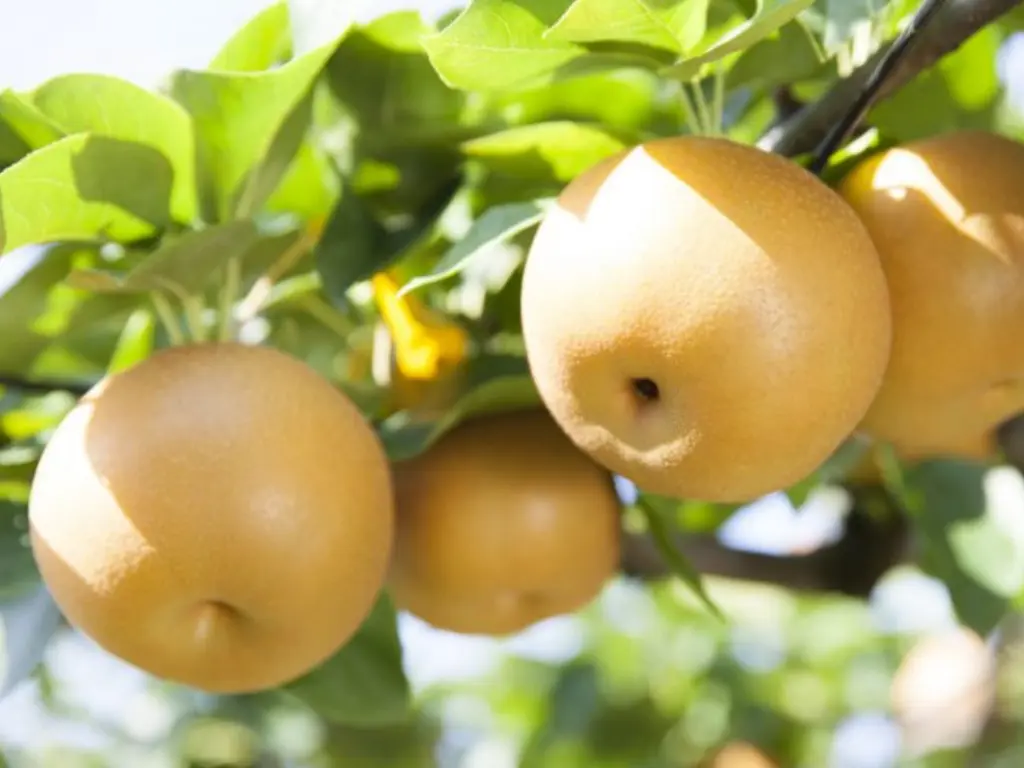
Shinseiki is a favorite for gardeners who want a reliable, easy-to-grow tree. Its fruit is medium-sized, round, and bright yellow, with a sweet, mild flavor and a satisfyingly crisp bite. Shinseiki trees are known for their excellent cold tolerance, making them a great fit for a wide range of climates (USDA zones 5–9). They’re partially self-fertile, so you might get fruit with just one tree, but you’ll see even bigger harvests if you plant a second variety nearby. If you’re new to growing fruit trees or want something that just works, Shinseiki is a fantastic place to start.
Hosui
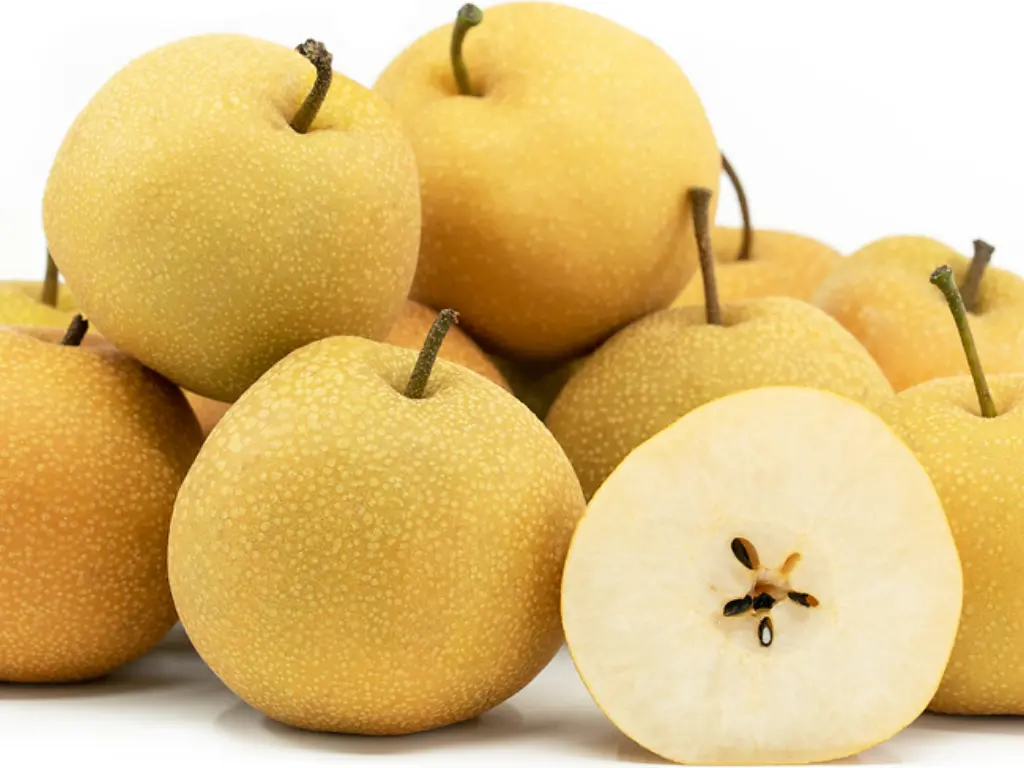
Hosui is one of the most popular Asian pear tree varieties for home gardens and for good reason. It produces large, bronze-golden fruits that are sweet and juicy, with a mild tartness that balances the flavor beautifully. In my experience, Hosui pears are the crunchiest among Asian pear types and are always the first to disappear at farmers’ markets. They ripen in early to mid-season and grow best in USDA zones 5-9. For best results, plant them near a pollinator like the 20th Century or Shinko to maximize fruit set. If you want a reliable, productive, and delicious pear tree, Hosui is your go-to choice.
Nijisseiki (20th Century)
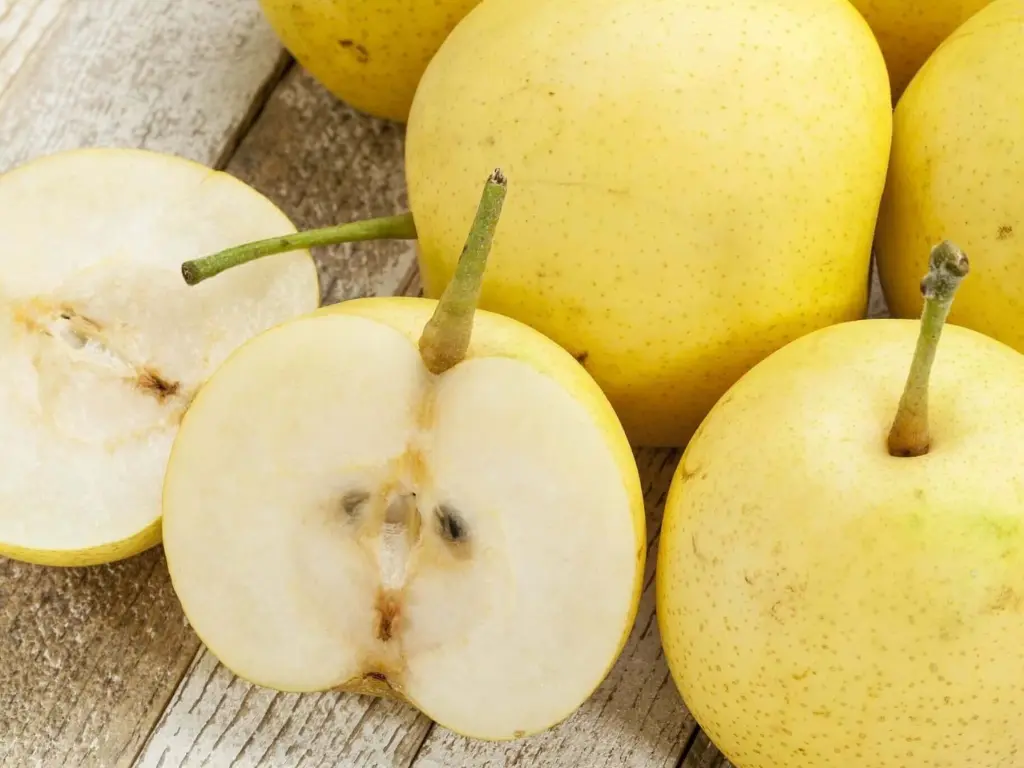
Also known as Nijisseiki, the 20th-century pear is arguably the most famous Asian pear cultivar for home gardens. Its fruits are round and smooth, with pale yellow skin and incredibly juicy, sweet flesh that refreshes you instantly on a hot day. The 20th Century is partially self-pollinating but still benefits from a cross-pollinator for heavier crops. It performs well in USDA zones 5-9 and produces reliable harvests each year. This variety is ideal if you’re planting your first Asian pear and want a tried-and-true cultivar that delivers.
Chojuro
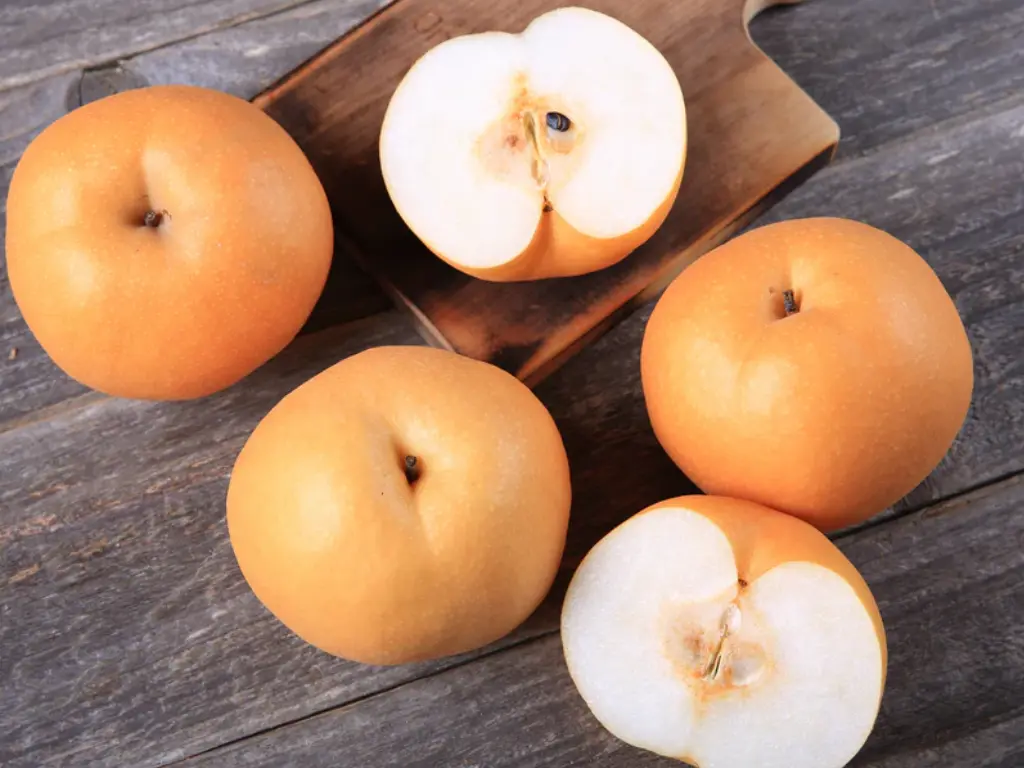
Chojuro brings something a little different to the table with its rich, aromatic flavor and notes of butterscotch. The fruit is smaller and the tree has a compact growth habit, making it ideal for small gardens or even large containers. Like most Asian pears, Chojuro needs a pollinator, but its unique taste makes it well worth the effort. If you’re short on space but big on flavor, Chojuro is a variety you’ll want to try.
Dwarf Asian Pear Trees
Don’t have a big backyard? No problem. Many nurseries now offer dwarf Asian pear trees grafted onto compact rootstocks, which keep the tree around 8-10 feet tall, perfect for small spaces or container gardening. Varieties like Hosui, Shinko, and 20th Century are commonly available as dwarf trees. With regular pruning and a large container (minimum 15-20 gallons), you can enjoy fresh pears even on your patio or balcony garden. Dwarf Asian pear trees are also easier to net against birds and to harvest without ladders – a huge bonus for urban gardeners.
How to Choose the Right Asian Pear Tree
Not sure which variety is right for you? Here’s how to narrow it down:
-
Climate: Check your USDA hardiness zone. Shinseiki and Korean Giant are tough enough for colder areas, while Hosui and Nijisseiki prefer milder zones.
-
Garden size: If space is tight, look for dwarf or semi-dwarf trees like Chojuro or Shinseiki, which are perfect for small yards or even containers.
-
Taste preferences: Want something super-sweet? Try Hosui or Korean Giant. Prefer a milder, crisper bite? Shinseiki or Nijisseiki are great picks.
-
Pollination needs: Most Asian pears need a partner for the best fruit set. If you only have room for one tree, go for a partially self-fertile variety, but remember, two is always better for a bigger harvest.
-
Maintenance: If you want a tree that’s easy to care for, choose varieties known for disease resistance like Shinseiki and Hosui.
Planting two different varieties not only boosts your harvest but also adds diversity and interest to your garden.
Caring for Asian Pear Trees
Getting your Asian pear tree off to a strong start is the secret to years of delicious fruit. Here’s how to do it right:
Site Selection and Soil Preparation
Pick a sunny spot in your yard with well-drained soil—Asian pears love the sun and hate soggy roots. Test your soil if you can; these trees prefer a slightly acidic to neutral pH (6.0–7.0), but they’re pretty forgiving. Space standard trees about 15–20 feet apart, while dwarf varieties can be as close as 8–10 feet. Good air circulation helps prevent disease, so don’t crowd your trees.
Planting Steps
Dig a hole that’s twice as wide as the root ball but no deeper. Place the tree so the roots are spread out and the top of the root ball is level with the ground. Fill in with your native soil, water thoroughly, and add a layer of mulch to keep the roots cool and moist. Mulch also helps keep weeds at bay, making your life easier.
Watering, Fertilizing, and Pruning
Water deeply during dry spells, especially in the first year as your tree gets established. In early spring, feed your tree with a balanced fertilizer to support healthy growth and fruiting. Prune in late winter to shape the tree and remove any dead or crossing branches—this keeps your tree healthy and productive. Don’t worry, pruning isn’t as scary as it sounds, and your tree will thank you with better fruit!
Common Pests and Diseases
Asian pears are generally tough, but it’s smart to keep an eye out for trouble. Fire blight is the main disease to watch for—choosing resistant varieties like Shinseiki and Hosui helps a lot. Pests like codling moths, aphids, and mites can show up, but regular monitoring and organic controls usually keep them in check. Most Asian pears need 300–600 chill hours in winter, so check that your local climate matches your chosen variety’s needs.
Frequently Asked Questions (FAQs)
1. What is the easiest Asian pear tree to grow in the US?
If you’re looking for a no-fuss option, Shinseiki and Hosui are hard to beat. They’re hardy, productive, and naturally resistant to many common issues, making them perfect for beginners or anyone who wants a reliable tree.
2. Do Asian pear trees need a pollinator?
Most Asian pear trees do best when planted with a partner of a different variety. Some, like Shinseiki, are partially self-fertile and will set some fruit on their own, but you’ll get a much bigger, better crop with cross-pollination.
3. How long does it take for an Asian pear tree to bear fruit?
You won’t have to wait long—most Asian pear trees start producing fruit within 2–4 years of planting. With a little patience and care, you’ll be enjoying homegrown pears before you know it.
4. Which Asian pear variety is best for small gardens?
Short on space? Dwarf varieties like Chojuro and Shinseiki are perfect for small yards or even large pots. They stay compact but still deliver plenty of delicious fruit.
Conclusion
Choosing the right Asian pear tree for your US garden is all about matching your climate, space, and taste preferences to the perfect variety. With so many options, there’s truly an Asian pear tree for every gardener—whether you want crisp, juicy apples or sweet, aromatic pears. Plant at least two varieties for the best harvest, and don’t be afraid to experiment with different types to discover your favorites.
Ready to take the next step? Visit your local nursery or browse trusted online retailers for Asian pear trees suited to your region. And if you’re hungry for more tips, check out our other guides on growing fruit trees and creating your own home orchard. Happy gardening—and here’s to crunchy, juicy pears in your own backyard!

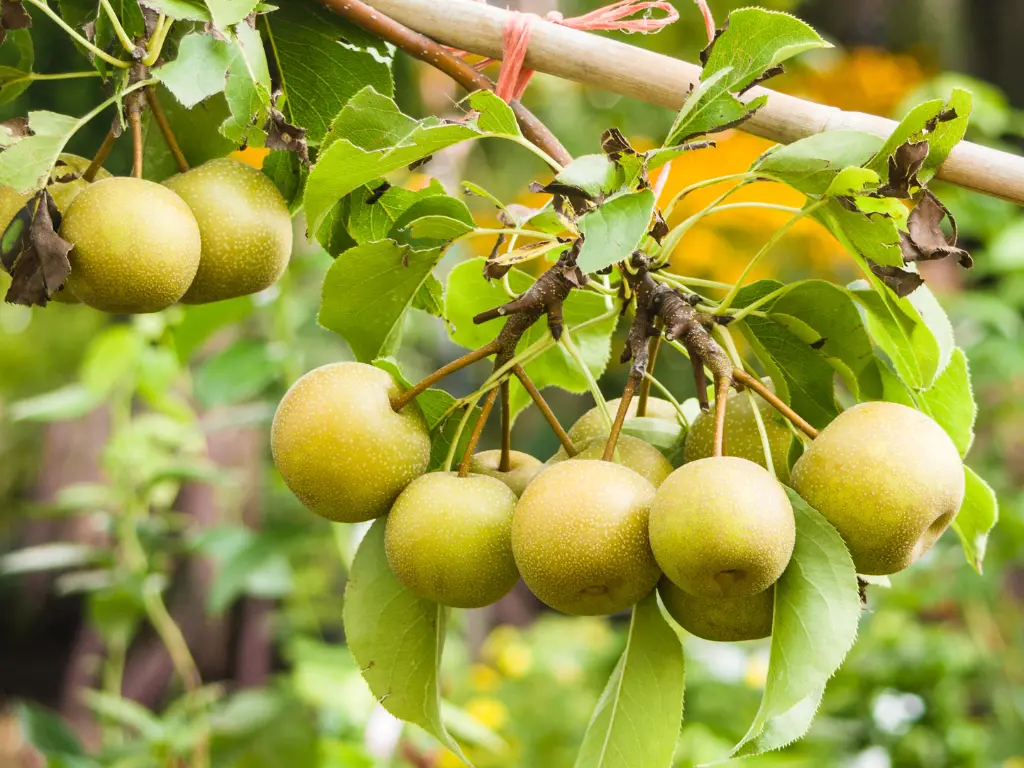
10 Best Christmas Plants to Gift This Holiday Season
The holiday season is finally upon us, and if you’re searching for the perfect gift [...]
Oct
Top Reasons to Grow Your Own Curry Leaf Plant at Home
Have you ever walked through your local grocery store and noticed the small bundles of [...]
Oct
Best Types of Garlic You Must Grow Once in Your Garden
Have you ever tossed a clove of garlic into the pan, expecting an aromatic burst, [...]
Oct
How to Propagate Vinca Minor: Simple Steps for a Lush, Spreading Ground Cover
Have you ever admired the beautiful carpet of glossy green leaves and purple-blue flowers of [...]
Oct
9 Best Ground Cover Plants to Prevent Weeds
We all know that keeping weeds at bay can be one of the most challenging [...]
Oct
How to Propagate Christmas Cactus: Easy Methods for Thriving Holiday Plants
Have you ever wished you could have more of those beautiful, blooming Christmas cacti to [...]
Oct